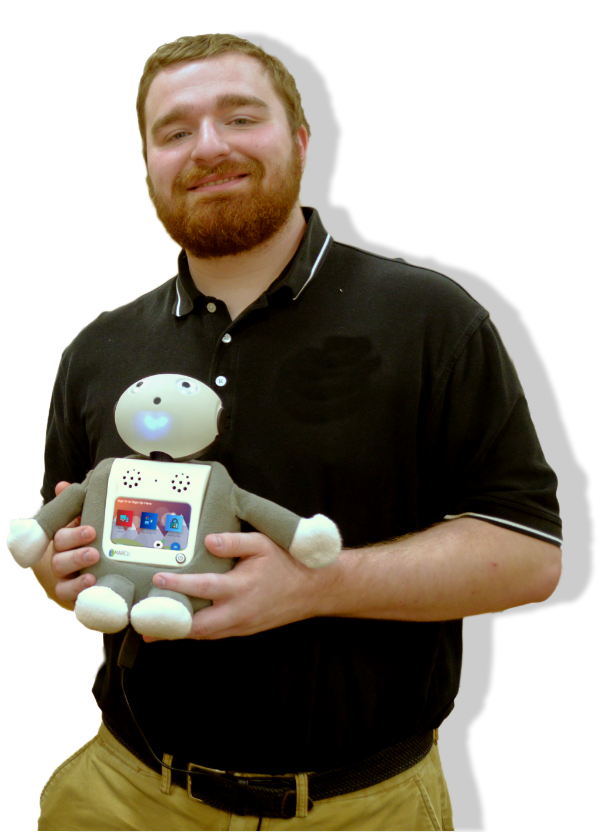Why should I use the Emotion Wheel?
If you were asked to say how you were feeling today, what might you say?
“I’m good,” maybe.
Or “I’m a bit down.”
“I’m angry.”
Or maybe it’s an overwhelming day and you say “Honestly, I don’t know what I’m feeling.”
These are all valid feelings, and it’s perfectly okay to not be able to name what you are feeling, but when it comes to addressing your feelings, they’re not particularly helpful. If you just said “I’m feeling down,” where do you even start in trying to get yourself feeling better? But if you instead said “I’m feeling lonely,” now you know that you need a friend to talk to!
If you want to best address your emotions, it is essential that you can properly name the emotions that you experience. This can also help you figure out the thoughts and habits that lead to these emotions.
To make the identification and naming of emotions easier, a psychologist called Robert Plutchik came up with a concept called the emotion wheel. It is also known as the Plutchik wheel. There are multiple variations of the emotion wheel, but they all serve a similar purpose – to help you better understand your specific emotions.
What is The Emotion Wheel?
What’s the emotion wheel? According to the Emotion Wheel (otherwise known as the Plutchik Wheel or Feeling Wheel), there are eight basic emotions that humans experience listed as follows:
- Joy
- Trust
- Fear
- Surprise
- Disgust
- Sadness
- Anger
- Anticipation
The state of emotion in a human experience depends on the intensity of each emotion. As you move towards the center of the wheel, the emotions become more intense and more general. The emotions become more specific or milder as you move out of the wheel. To help individuals use this, the emotion wheel app is developed by tech developers which have the same purpose as the Plutchik wheel. This app is popularly known as the feeling wheel app.
How Do I Use the Emotion Wheel?

There are many situations where you don’t know what kind of emotion you are experiencing. So, to name the kind of feeling you are experiencing, you have to find your basic emotion.
You can do this by finding the feeling on the emotion wheel that you think matches your current emotional state. As you narrow down the options, you would be able to name the emotion you are experiencing.
As you take a look at the feeling wheel, you can see that the emotions are placed on color-coordinated spokes in three layers. Let us classify them to understand the wheel in a better way:
-
Outer layer:
The emotions with lowered intensity can be found here. These include pensiveness, distraction, acceptance and more.
-
Towards the core:
As you go towards the core of the emotion wheel, the color of the wheel grows deep. Here, you can find basic emotions that you experience like trust, surprise, joy, and more.
-
Center circle:
When it comes to very intense emotions, they can be found in the centre circle. This includes emotions like amazement, adoration, loathing and others.
-
Between each colored spoke:
When you think you are having mixed emotions, then you should choose to look for them between the colored spokes. For instance, the combination of emotions like joy and trust gives rise to love.
This is the method of using the feeling wheel to identify the emotion or range of emotions that you experience. Emotions show up as and when you experience a series of events during the day. Since we don’t know how to identify what we are feeling, we are guilty of bottling them up and pushing them down.
This can lead to a misunderstanding of the experiences we go through and the emotions we associate with them. Hence, you can use the feeling wheel to better associate what emotions you have associated with a particular life event so you can best figure out how to address it.
Conclusion
MARCo Technologies LLC has formed an emotion wheel app that could help you identify how you are feeling today. This app encompasses Plutchik’s emotion wheel in an interface and helps you find the right emotion you are experiencing currently. A digital version of the emotional wheel helps you understand how exactly you are feeling today. The emotion wheel app is also available as a tool MARCo – the Mental health Assisting Robot Companion – can do with you. You can check it out for free for 7-days online or get the robot for yourself.
Jacob Boyle
Jacob Boyle serves as CEO and CTO of MARCo Technologies. As CEO, his primary functions include defining the company direction, managing contractors and employees, and spearheading outreach and customer discovery. As CTO, he has handled the development of MARCo, having designed and produced the existing MARCo units; coordinate with manufacturers; develop software for the online edition; and oversee continued R&D. He also served as the Technical Lead in the National Science Foundation’s I-Corps accelerator program on behalf of the company.






